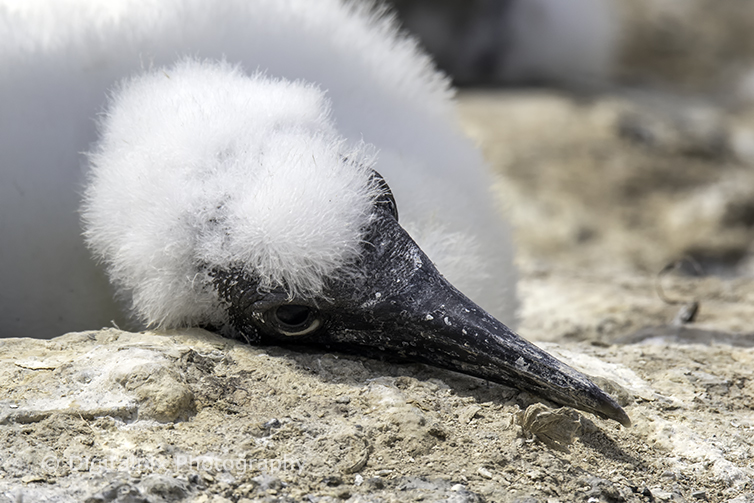 The trip out to the Cape Kidnappers colony is in an air conditioned 4 wheel drive bus and for me it is great. No real walking involved and we are parked within feet of the birds. I saw a lot of different behaviour with the Cape Kidnappers colony than I did at Muriwai. There is less wind and the land is very flat where they are nesting even though it is very high up.
The trip out to the Cape Kidnappers colony is in an air conditioned 4 wheel drive bus and for me it is great. No real walking involved and we are parked within feet of the birds. I saw a lot of different behaviour with the Cape Kidnappers colony than I did at Muriwai. There is less wind and the land is very flat where they are nesting even though it is very high up. It was very hot while we were there and the gannets were all trying to cool themselves. For some of the chicks even that was too much trouble so they just lay down. I was concerned at the start that I was looking at a deceased chick but it did move about and was very much alive – just hot.
It was very hot while we were there and the gannets were all trying to cool themselves. For some of the chicks even that was too much trouble so they just lay down. I was concerned at the start that I was looking at a deceased chick but it did move about and was very much alive – just hot. 
This trip I tried to concentrate on capturing the different behaviours of the gannets. They are such quirky birds when you take the time to watch what they do. At Cape Kidnappers, seaweed is the currency and is also the main component of the nesting mounds. Any piece of seaweed has value no matter how small, and the unpaired teens around the edge of the colony will try and impress the ladies with it at every opportunity. Things do not always go to plan and often fights will follow as other suitors get upset at the competition. I watched one pair of young males lock beaks in battle for almost five minutes before separating and continuing the threatening behaviour from a safer distance. They were very comical to watch because it turned into a battle of wills – who will give in first.
Things do not always go to plan and often fights will follow as other suitors get upset at the competition. I watched one pair of young males lock beaks in battle for almost five minutes before separating and continuing the threatening behaviour from a safer distance. They were very comical to watch because it turned into a battle of wills – who will give in first.
I just love to watch the gannets greet each other when one of the pair returns to the other. They have such a loving dance routine that repeats every time. The gannets pair for life so I guess it is more a dance of glee that they have actually found the right nest again. They all look alike to me and I wouldn’t blame them for getting lost.
After the parent birds have finished their dance and one of them has departed again, the chick will then start to tap on the remaining parent’s beak in the hope of getting food. This goes on for some time before the parent bird starts to regurgitate food to feed the chick. This last image is a little upsetting as it shows a chick with a major beak deformity. I doubt the chick will survive once its parents stop feeding it as it will be unable to dive for fish. Nature can be cruel sometimes.

